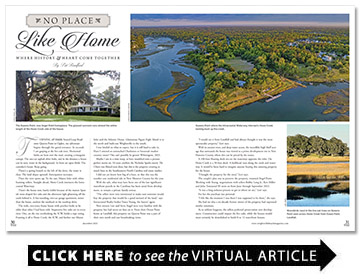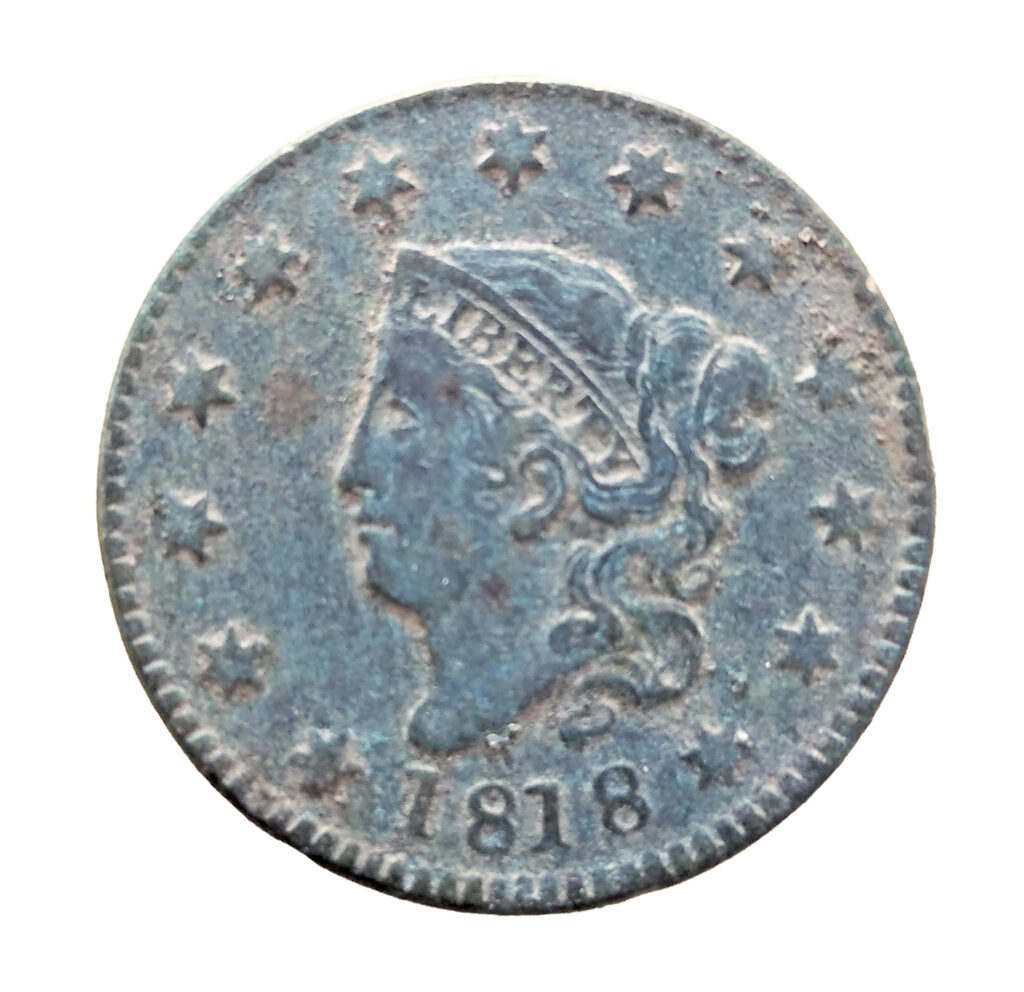No Place Like Home
Where history and heart come together
BY Pat Bradford
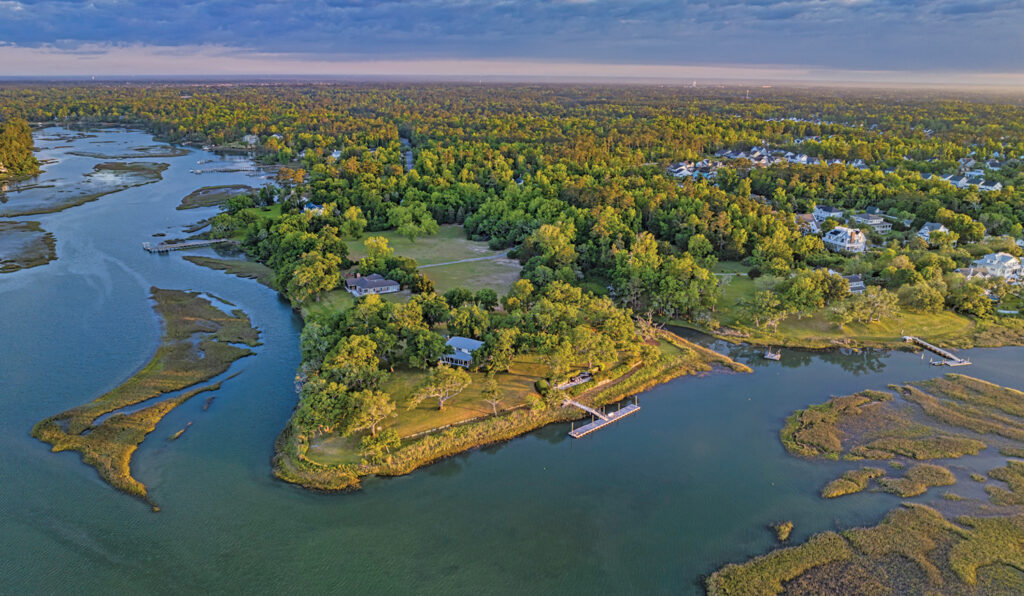
Turning off Middle Sound Loop Road onto Queens Point in Ogden, my adventure begins through the gated entrance. In seconds I am gasping at the live oak trees. Horizontal limbs are bent over the road, creating a triangular canopy. The one-car asphalt drive forks, and in the distance a house can be seen, water in the background. In front are open fields. The caretaker’s house. Keep going.
There’s a spring branch to the left of the drive, the water is clear. The land slopes upward. Anticipation increases.
Then the view opens up. To the east, Mason Inlet with white foaming rollers. Straight ahead, Howe Creek intersects the Intracoastal Waterway.
There’s the house now, barely visible because of the mature Spanish moss-draped live oaks and the afternoon light glistening off the creek behind it. A free-standing, two-car garage apartment, newer than the house, anchors the turnback in the teardrop drive.
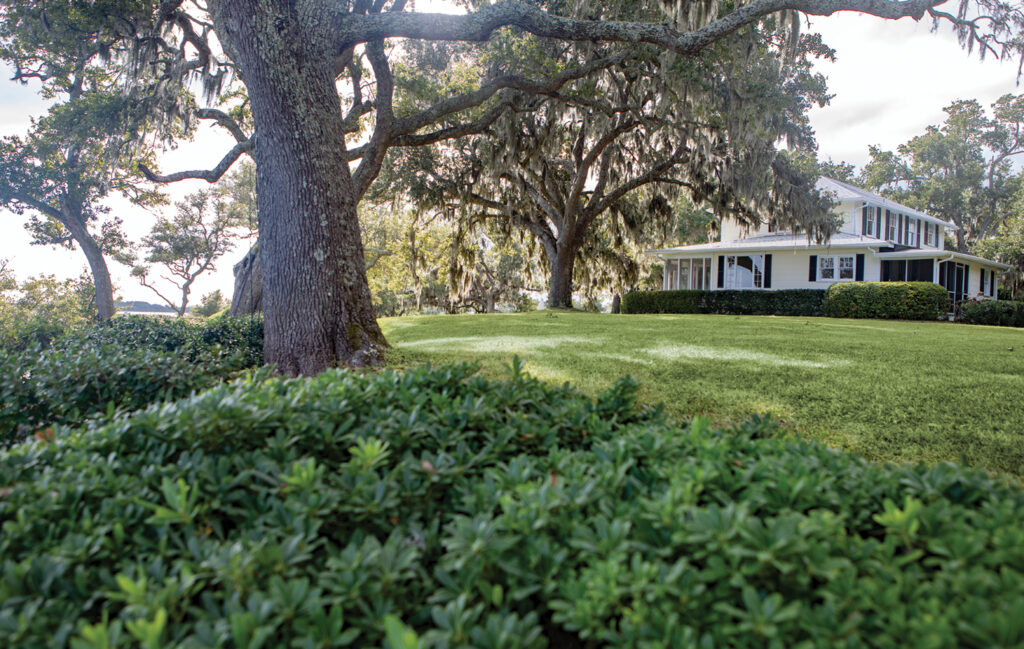
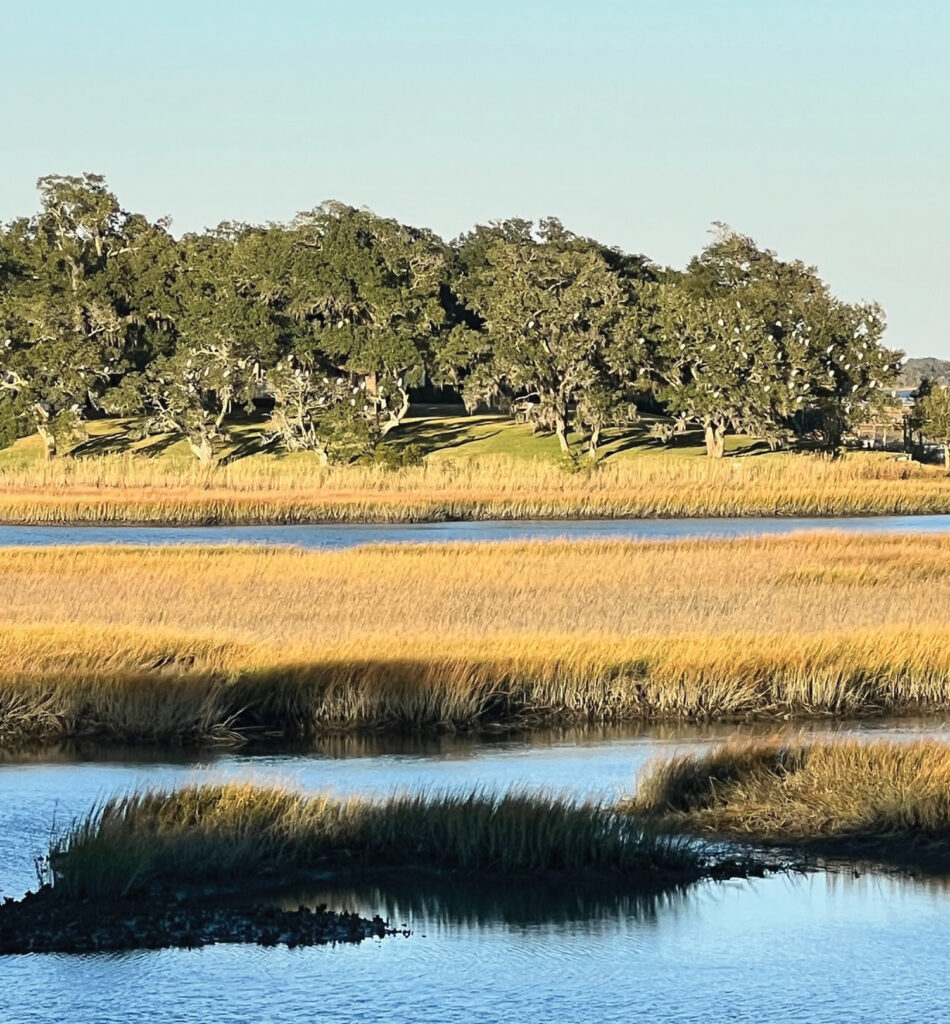
The wide, two-story frame house with porches looks to be older than what I had been told. Impressive live oaks are in every view. One, on the rise overlooking the ICW, holds a rope swing. Framing it all is Howe Creek, the ICW, and farther out Mason Inlet and the Atlantic Ocean. Glamorous Figure Eight Island is to the north and built-out Wrightsville to the south.
I was briefed on what to expect, but it is still hard to take in. Have I entered an untouched Charleston or Savannah modest country estate? This can’t possibly be greater Wilmington, 2023.
Maybe I am in a time warp, or have stumbled onto a picture-perfect movie set. I’d soon confirm the Nicholas Sparks movie The Choice was filmed next door, but this is the property creating so much buzz in the Southeastern North Carolina real estate market.
I did not yet know how big of a buzz, or that this was the number one residential sale in New Hanover County for the year.
With the sale, what may have been one of the last significant waterfront parcels in the Carolinas has been saved from development, to remain a private family retreat.
“The sellers were very intentional to make sure someone would buy the property that would be a good steward of the land,” says Intracoastal Realty broker Vance Young, the buyers’ agent.
New owners Lori and Steve Angel were very familiar with the property but had never set foot on it. From their Ocean Point home at Landfall, this property on Queens Point was a part of their own north and east breathtaking views.
“I would see it from Landfall and had always thought it was the most spectacular property,” Lori says.
With its ancient trees, and deep-water access, the incredible high bluff acreage that surrounds the house was viewed as a prime development site in New Hanover County, where dirt can be priced by the ounce.
A 100-foot floating dock sits on the waterway opposite the inlet. On Howe Creek is a 30-foot dock. A bulkhead runs along the creek and waterway. It would’ve been hard to imagine anyone buying this amazing property for the house.
“I bought the property for the trees,” Lori says.
The couple’s plan was to preserve the property, renamed Angel Point. Working with Young, negotiations with sellers Bobby Long Jr., Ken Miller and John Townsend III went on from June through September 2023.
“It was a long arduous process to get to where we are,” Lori says.
For her the purchase was personal.
“I felt like the moment I was there I was supposed to be there,” she says.
She had no idea a six-decade former owner of the property had expressed similar emotions.
As so seldom happens, the sellers preferred preservation over development. Construction could impact the live oaks, while the houses would most certainly be demolished to build 8 to 12 waterfront houses.
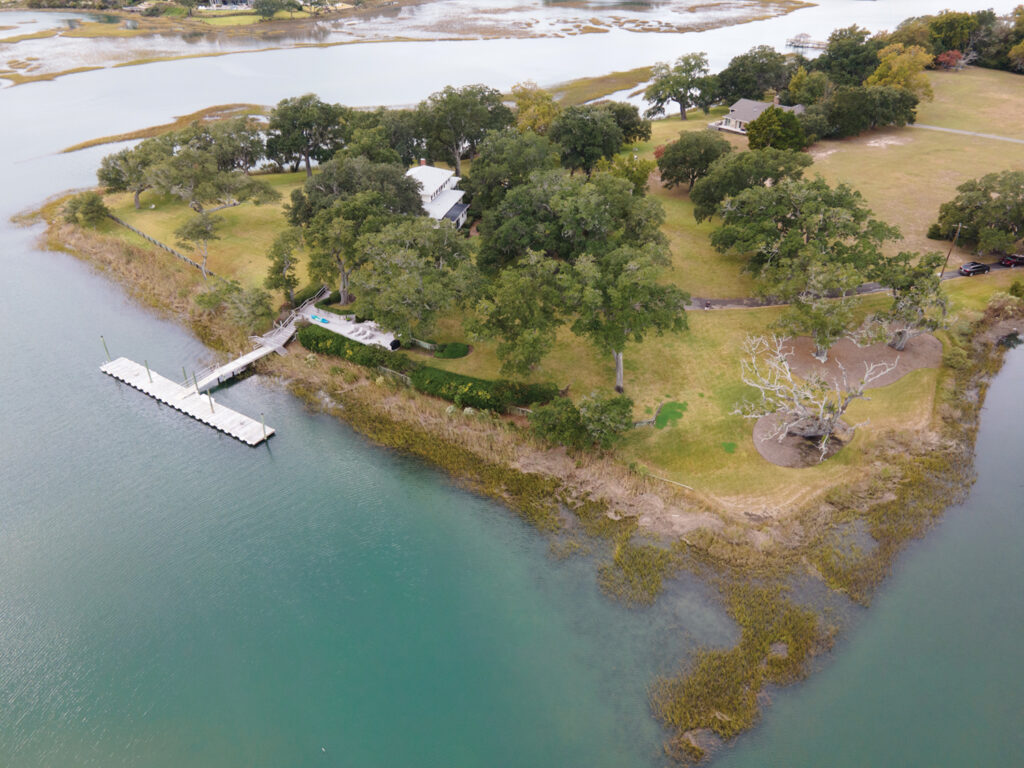
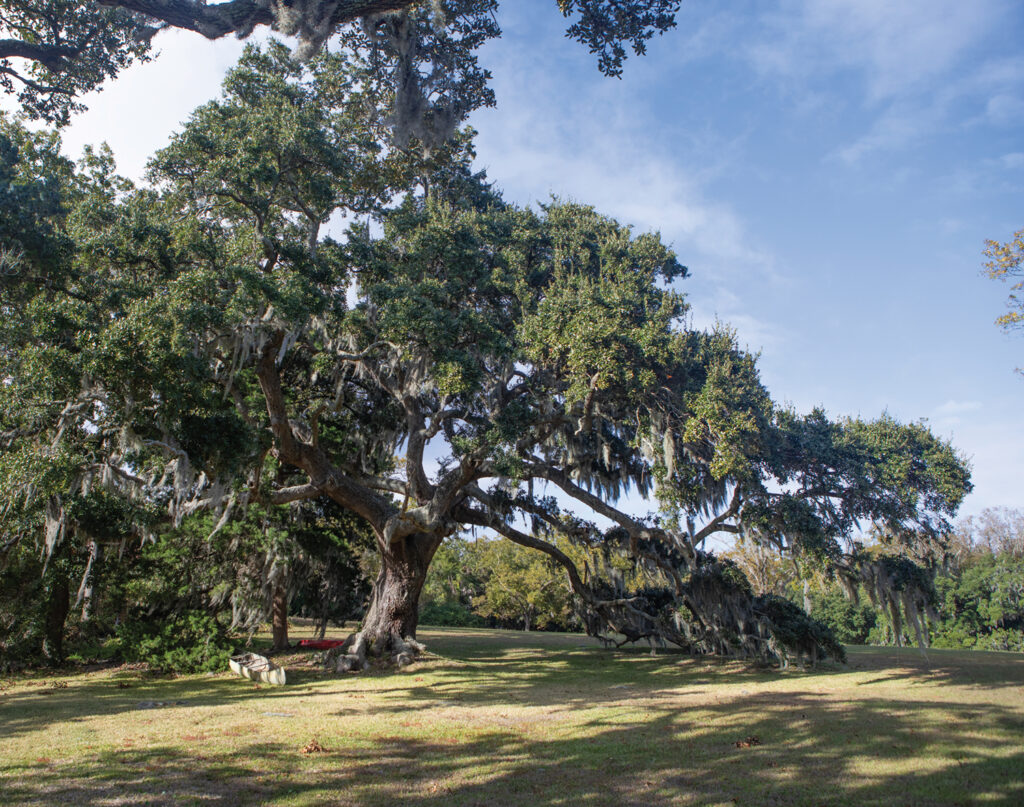
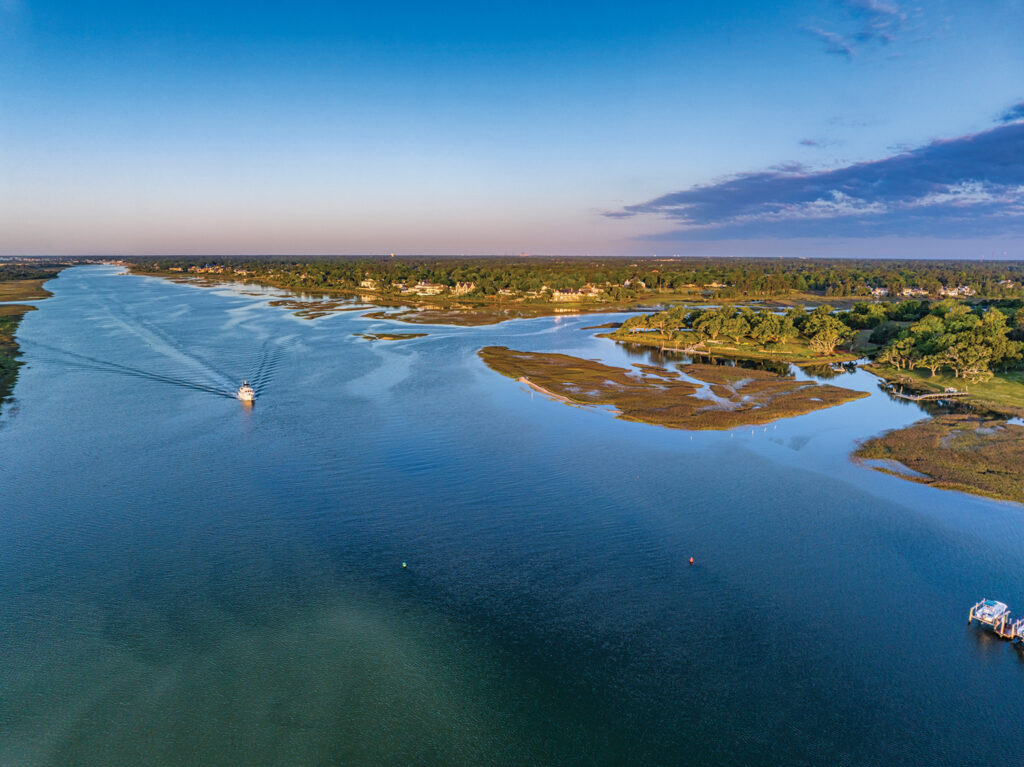
We had a lot of interest from developers,” says selling broker Buzzy Northen, also with Intracoastal Realty.
The plat of Queens Point was recorded in 1923. The site, six parcels in all, was not listed for sale.
“They didn’t want it to be listed. They wanted me to sell it quietly to someone local, they wanted to preserve the integrity of the property,” Northen says.
He selectively shared a video of the property, which was seen by Lori’s neighbor, who told Lori about a possible sale of the wooded point opposite her home on Howe Creek, formerly known as Barren Inlet Creek.
Working through Young, the Angels found favor with the sellers.
“They were very, very diligent in trying to sell it to an independent person rather than a developer,” Lori says. “A developer had approached them about buying it. The three families had owned it for 22-23 years. Once a developer approached them, they concluded it might be a good time to exit. We appreciate them agreeing to sell it to us versus to development.”
Northen confirms the sellers could have sold “for significantly more money.”
The present-day configuration is a little over 30 acres. Approximately 12.6 is high ground and the rest is marsh and wetlands.
Steve was “pragmatic about the purchase in the beginning,” Young says.
Some trees are estimated to be between 150 and 250 years old, with a few close to 300 years old, Northen says. Hurricanes have taken well over a dozen over the years, but one or more trees could have been standing in 1729 when seven of the English Lords Proprietors of the Carolinas agreed to sell their shares of North Carolina (back) to King George II and North Carolina became a British royal colony.
“Now, he’s all about the trees,” Lori says.
Comparisons can be made to the trees of Airlie Gardens.
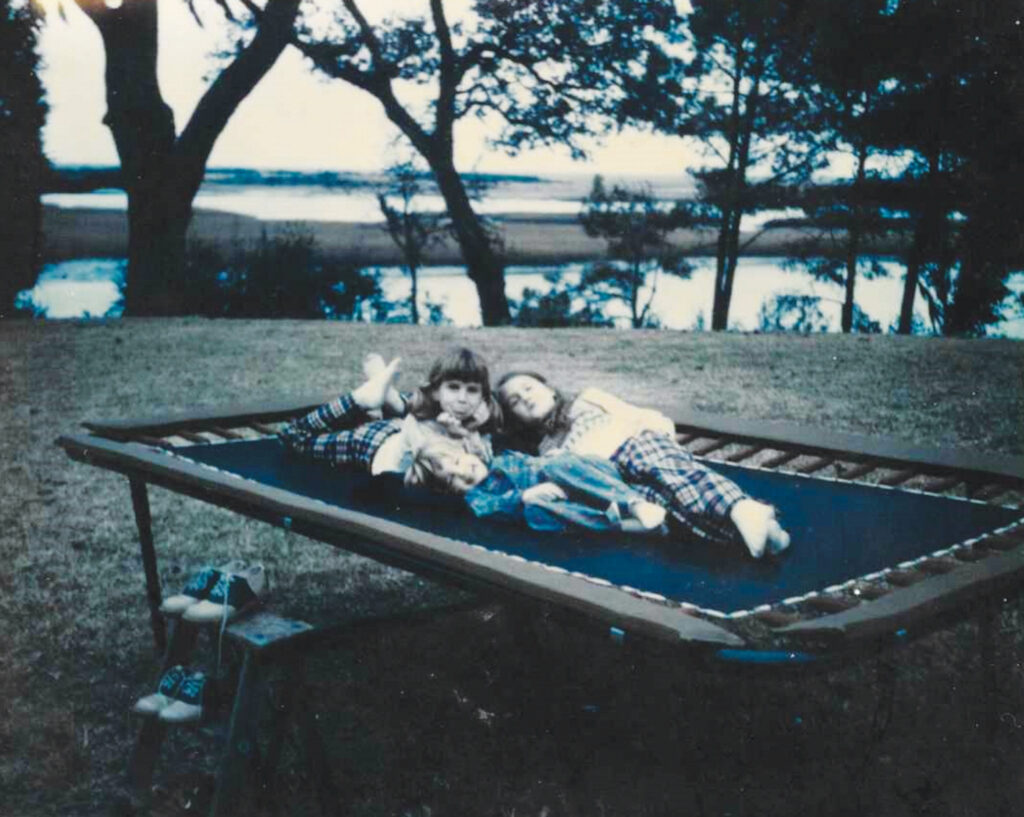
Steve brought in arborist Everett Jones to assess the health of the trees.
“It’s a spectacular property,” Jones says. “Yes, there are trees that are 200-plus years old, but because of the way that it has been left with minimal construction impact, it has left those trees mature, it has left it like an old Southern garden.”
The earliest occupants of the property strategically located on the high bluff opposite an inlet to the east, bordered by the deep creek were Native American Indians who migrated to catch and to dry fish and feast on oysters. There is a hollow live oak of great size on the property said to have sheltered fires of Native Americans in its trunk. For generations, artifacts have routinely been found on the property.
Wilmington native Patricia “Sissy” Mebane Schoettelkotte, her sisters, brother Billy Mebane and cousins grew up playing on the expansive grounds of their grandparents’ home on the point.
“Elmer Aycock worked for the family and every summer he would plow the fields to plant fruits and vegetables,” Schoettelkotte says. “We would walk the rows and find artifacts. We found pieces of peace pipes, pottery and arrowheads. As a kid, to find the top of the bowl of a peace pipe was so cool.”
She says every time Aycock plowed, the earth would give up its treasures.
“There were literally buckets of arrowheads, pipe bowl pieces and pottery,” Billy Mebane says.
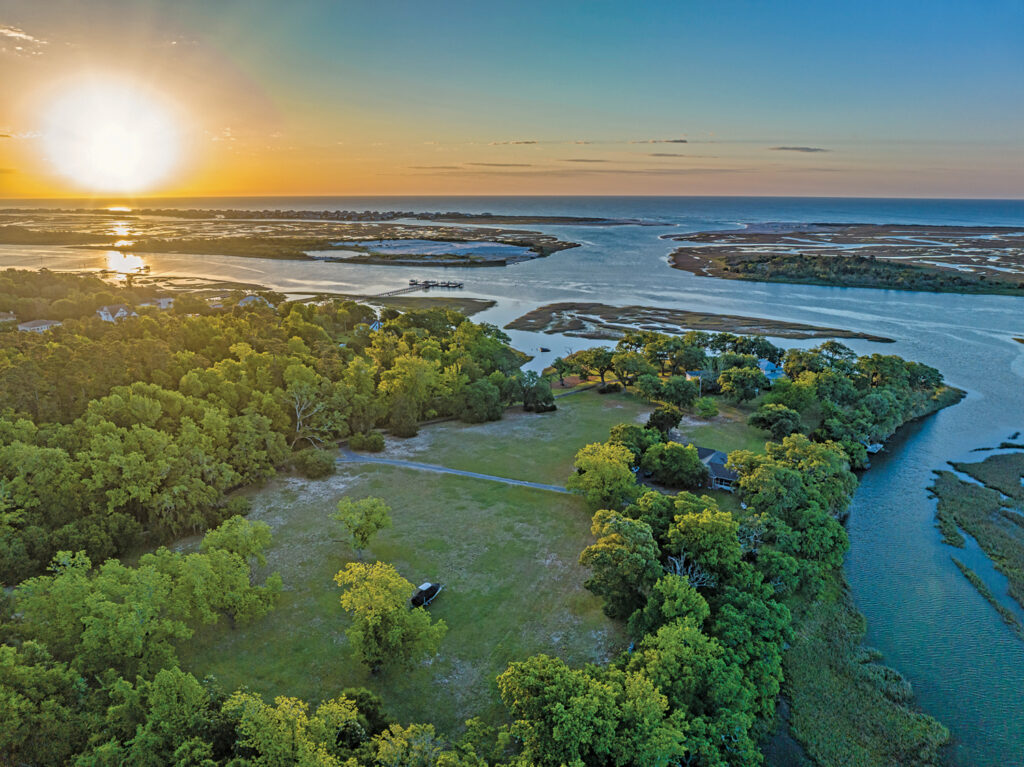
Not unlike other coastal locations oysters were plentiful in the waters around the Point. “Near two small live oaks there are two mounds of Native American oyster shells, called middens, just to the southwest of the Mebane property,” says former neighbor Richard Gwathmey Jr.
Pearl and Warren W. Bell sold the house on the Point after World War II to Schoettelkotte’s grandfather, Dr. William Carter Mebane Jr. (1908-1971), and his wife, Pauline Eckert Mebane (1908-1999.)
They had three daughters and one son, William Carter Mebane III.
“He had four children, and between us we have 11 children,” Schoettelkotte says of her father.
“My grandparents were out sailing in the Intracoastal and they saw the land and a big sign for sale,” Mebane Boyd says. “She told me, ‘That was the only thing that I ever coveted.’”
She remembers the Point as having belonged to someone with Tidewater Power Company.
The family’s patriarch, Dr. William Carter Mebane Sr. (1882-1940), a urologist was from Madison, North Carolina, he and matriarch Susan Sadie Mott lived in the Winter Park area of Wilmington.
“My grandfather bought it,” says Schoettelkotte. “He did not grow up there, he grew up on Wrightsville Avenue in Winter Park, but my grandparents moved there to the Point.”
The Mebane family called the property the Homeplace, and Nanna and Pa’s for 30 years.
It included a barn that became a sailboat shed, since torn down.
There was a mallard duck pen, a chicken coop and a pecan grove.
Schoettelkotte’s grandfather, Dr. William “Billy” Carter Mebane Jr., was a general surgeon. There would be three additional boys in the family given the same name. Grandson Billy’s business is Port City Pergola. His son, William “Will” Carter Mebane V, is 7.
“When my grandparents lived there it was their home,” Schoettelkotte says. “We spent a ton of time there as kids.”
Schoettelkotte’s grandfather, Aunt Prissy and father, William Carter Mebane III were all sailors. Carter was a past commodore of the Carolina Yacht Club. Dr. Mebane had a raven, said to be the only one in the area. Prissy sailed a Moth boat.
“My grandfather would build Moth boats in the barn for the kids,” Billy Mebane says.
“I’ve been going out there my whole life, but in the second grade, when my father died, we lived there for two years, but then we were also always there every summer. My Aunt Prissy would come for the summer,” says Schoettelkotte. “It was such a special place to go. It was such a cool house with that great big glass porch on it.”
A former caretaker’s house was torn down. The current one level caretaker’s house was built for Schoettelkotte’s grandmother following the death of her husband.
The closest neighbors going north on the ICW are the Baldwins in the house that had belonged to the Sidburys.
Physicians Dr. William Carter Mebane Jr. and Dr. James Buren Sidbury were neighbors.
Sidbury (1886-1967) is known for establishing Babies Hospital at Wrightsville Sound in 1920.
An editorial board opinion piece in the Wilmington StarNews dated July 15, 2016, notes Drs. “W. C. Mebane, R.T. Sinclair and Sam Pace” in 1953 launched a little hospital in Winter Park on Wrightsville Avenue, Cape Fear Memorial Hospital. This was 10 years before the New Hanover Memorial Hospital (later NHRMC) was built.
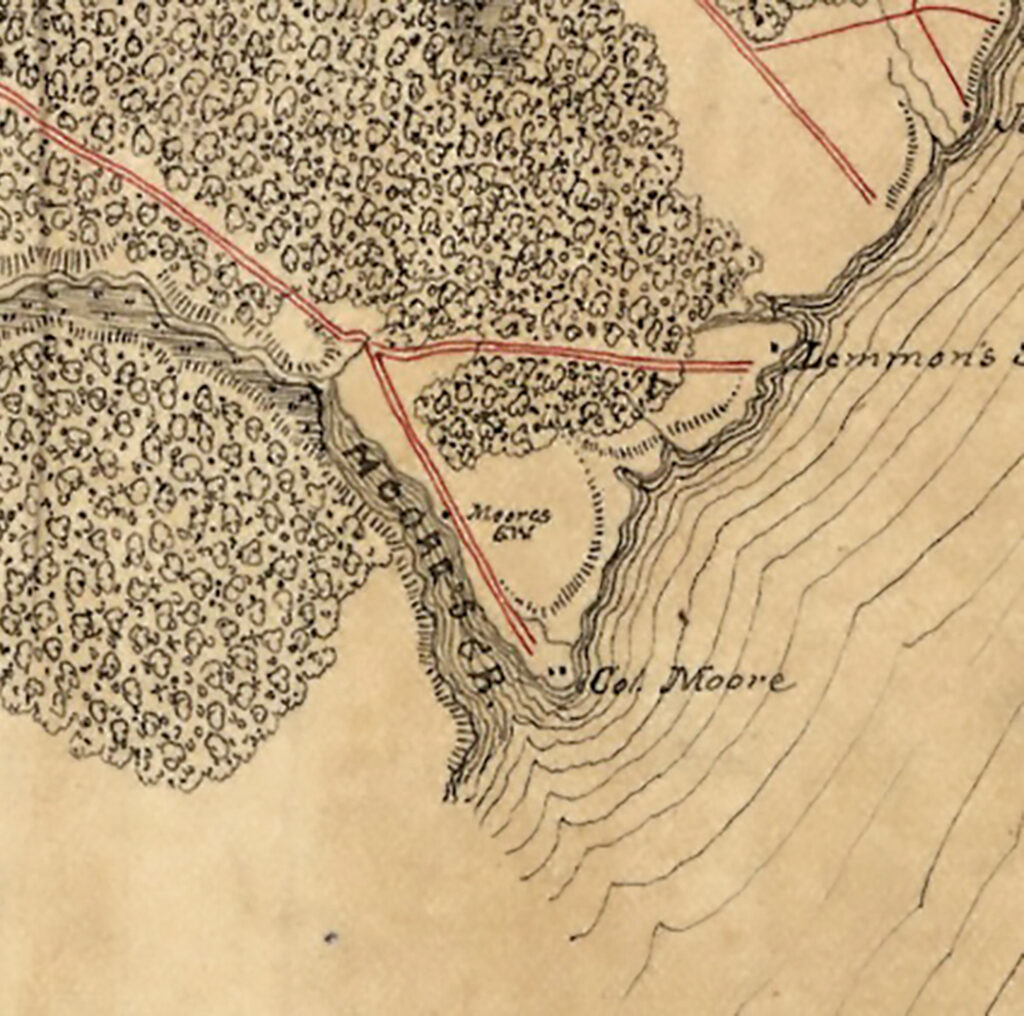
This point of land is as historically significant as it is breathtaking.
“I’ve found evidence that there was a Colonial fort there,” says Jack Hooker from Cape Fear Explorers, Southport’s historic preservation nonprofit.
Continuing the property’s historic lineage, Hooker believes Colonel Roger Moore (1839-1900) owned Queens Point during the 1800s. Moore was a descendant of James Moore, Colonial governor of South Carolina, and also “King” Roger Moore, founder of Orton Plantation.
“I found an old map,” says Hooker. “It showed Colonel Moore there.”
Among the artifacts Hooker unearthed on the Point are pieces of Spanish 2 reales coins cut into 4 equal sections or quarters.
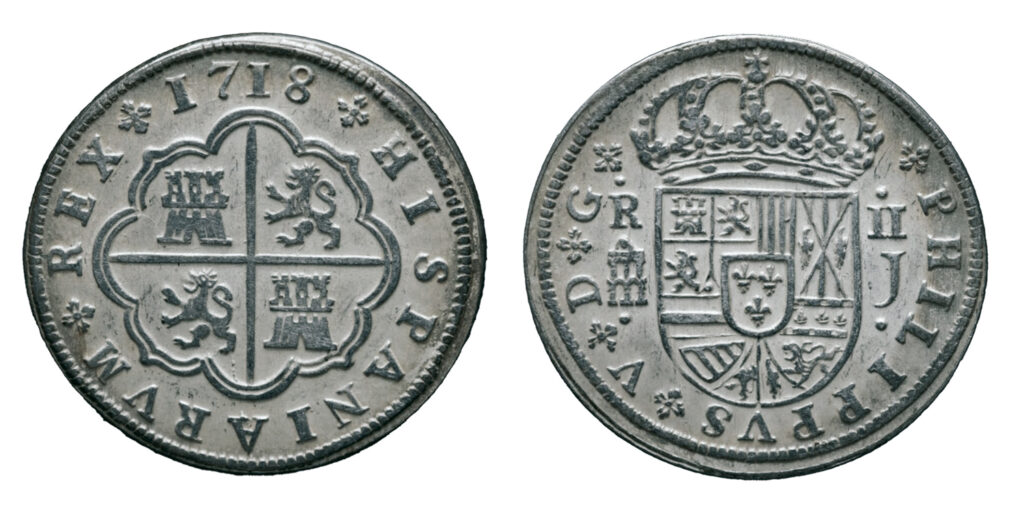
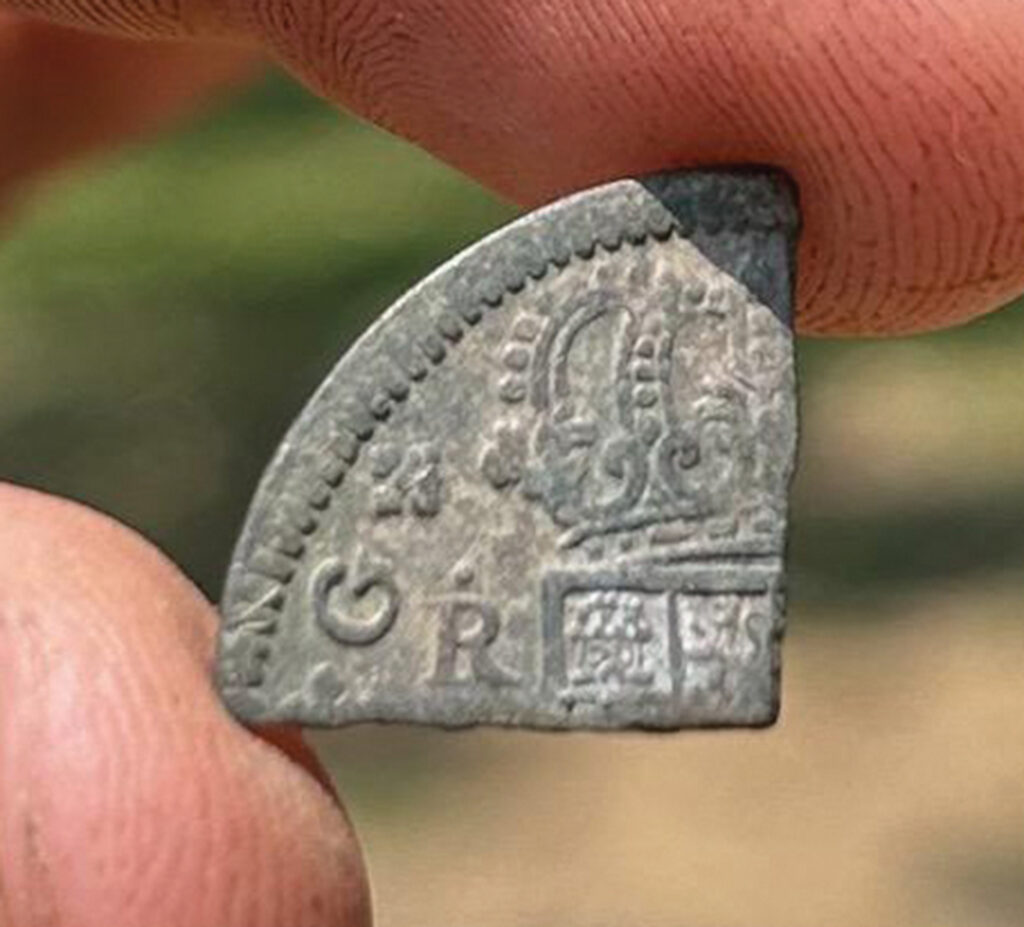
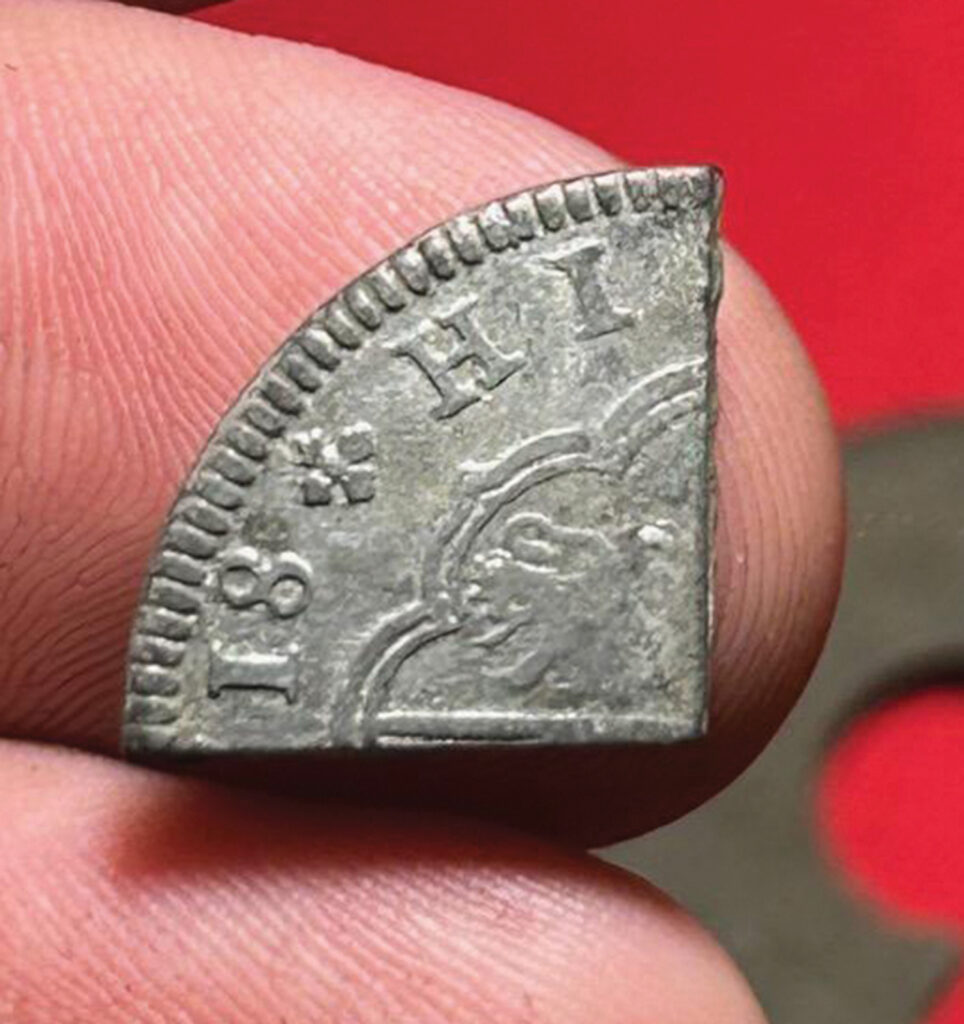
“That’s how they would make change, they’d cut the coin into quarters,” he says. “When cut into eight pieces, these coins were called pieces-of-eight. So, it dates the property from 1718. That was the same year that Stede Bonnet [the Gentleman Pirate] came up into the Southport area. There wasn’t anything here at that time, but people were using that land as a settlement. Ships were coming in the inlet. I’ve found tons of flat buttons, coat buttons. I’ve found Seated Dimes and Quarters that show Lady Liberty seated.”
Seated Liberty Dimes were issued from 1837 through 1891 and Seated Quarters from 1838 to 1853, says Archie Spell, owner of Archie’s Coin Shop in downtown Wilmington.
“The last time that I went out there I found one of the Colonial trash dumps. I didn’t dig it out without permission. I found all kinds of things including pewter tea kettle spouts,” Hooker says.
He says his research stopped at Colonel Moore but that the land was supposedly a fort that protected the area at the mouth of the inlet from pirates. He estimates this was during the 1600s to about 1800.
The 2023 sellers, all best friends, have houses at Figure Eight Island and Wrightsville Beach. They purchased the parcels from the Mebane family in January 2001. It was a professionally maintained getaway place and a family retreat. There were family and friend gatherings, private weddings, birthdays and honeymoons. One son was even engaged and married there.
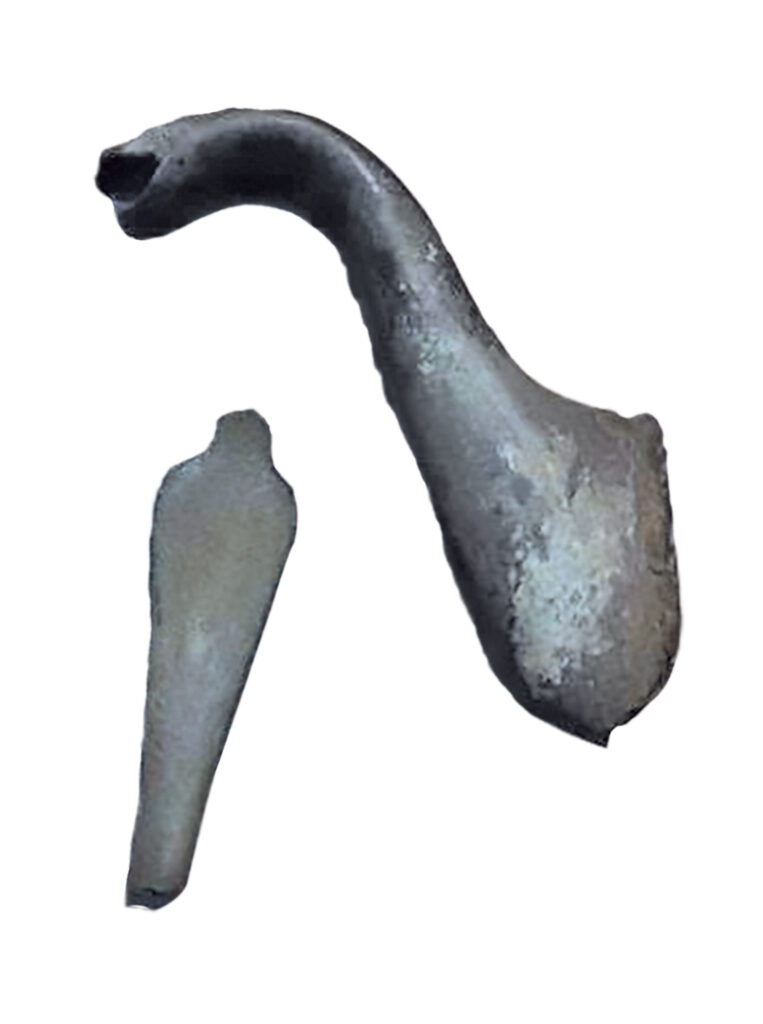
Angel Point will continue to be a gathering place for multiple generations of a new family and their children, grandchildren and friends. The house will not be torn down, but renovated to keep its character.
“It’s pretty early in the planning phase, meeting with the engineer and architect,” says restoration contractor Matt Taylor. “She is trying to keep the original integrity of the property but upgrade the tile baths and the kitchen. It’s pretty straightforward.”
A childhood friend of Lori’s, Debbie Hudson Crafa, will help in the preservation effort. The home’s age nor builder have been firmly established.
Lori’s roots go deep in the soil of North Carolina and Wilmington. Her father was a Wooten, her mother a Jernigan.
“My dad was from Goldsboro, my mother was from Clinton,” she says.
Both parents had sisters that lived in Wilmington.
“Their siblings moved here right after World War II in the 1940s,” she says. “My dad took a job in Richmond, Virginia, where I grew up, but my parents always came to Wilmington to be with the aunts. We spent our vacations here when I was a child.”
When Lori was a senior in high school, her mother married Randy Coble Sr. of Coble Funeral Home. Coble owned the waterfront property at the end of Bradley Drive, where Bradley Oak Townhomes are now.
“That used to be where my parents’ home was when I’d come home from school. That’s where I came home to,” Lori says.
Later the Cobles would create Oleander Memorial Gardens on land that had been a pony farm adjacent to their Bradley Point home.
“The cemetery was that property,” she says.
Her parents moved to Wrightsville Beach when Randy sold the family’s residential site to a developer.
Steve, a graduate of and serious N.C. State fan from Winston-Salem, and Lori, a Virginia Commonwealth University grad, met and married in Richmond. He was with GE; she was in finance. Steve’s business career was wildly successful. The couple moved all over the United States with his job, but Wilmington has always felt like home. He is the chairman of the board and former chief executive officer of the Linde Group. He was chairman, president and chief executive officer of Praxair, Inc., which merged with Linde. Steve has held various roles at General Electric, and currently serves on the GE board.
“He bought this for me, as a labor of love,” Lori says. “When I drove up to Queens Point and got out of the car the first time, I felt like I was coming home to Mom’s and Randy’s at Bradley Point. It felt like I was home.”
